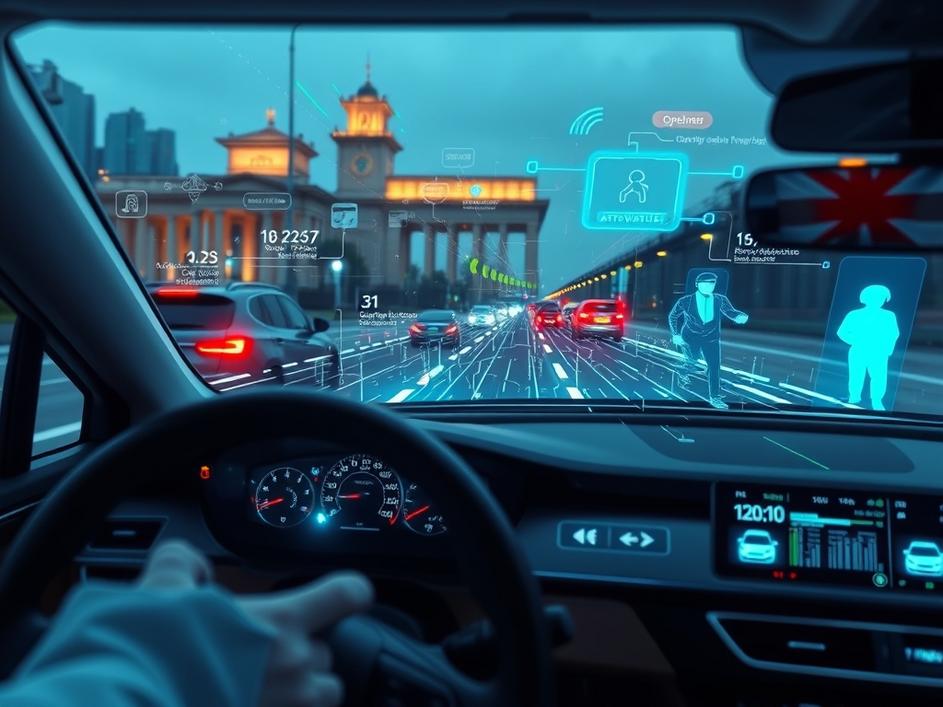


We are a digital agency helping businesses develop immersive, engaging, and user-focused web, app, and software solutions.
2310 Mira Vista Ave
Montrose, CA 91020
2500+ reviews based on client feedback

What's Included?
ToggleThere’s big news brewing in the world of automotive technology, and it’s coming from a company called STRADVISION. They’ve just taken a major step by putting in a preliminary application to list their shares on KOSDAQ, South Korea’s bustling stock market for growth companies. This isn’t just some routine paperwork; it’s a huge moment for STRADVISION and a clear sign of their confidence in their technology and the future of how we drive. For those unfamiliar, STRADVISION is an automotive software company focused on something called Advanced Driver Assistance Systems, or ADAS. Think of ADAS as the smart helpers in your car – things like emergency braking, lane keeping, and adaptive cruise control. These systems make driving safer and easier, and they’re built on highly advanced software that needs to be incredibly precise. This move to go public could open up a whole new chapter for them, giving them the resources to push their innovations even further. It’s an exciting time to watch how these critical pieces of software continue to evolve and become a standard part of our everyday vehicles, all working towards a future of safer, more intelligent transportation.
So, what exactly does STRADVISION do that makes this such a significant development? They specialize in what’s known as “deep learning-based perception technology.” To put it simply, imagine your car needing to ‘see’ and ‘understand’ everything around it, just like a human driver does, but even faster and more accurately. This technology is essentially the eyes and part of the brain for smart cars. It uses advanced artificial intelligence to process information from cameras and sensors, recognizing other vehicles, pedestrians, traffic signs, lane lines, and even potential hazards on the road. Without this kind of precise perception, ADAS features – and eventually fully autonomous driving – wouldn’t be possible. It’s a complex field, requiring a lot of specialized knowledge to develop software that can make split-second, accurate decisions in all kinds of driving conditions. STRADVISION’s focus on this niche, yet absolutely critical, area positions them right at the heart of the future of automotive safety and autonomy. Their work ensures that the car not only sees what’s ahead but understands what to do about it, which is a massive challenge and a testament to their engineering prowess.
When a company like STRADVISION decides to go public, it’s usually for a few key reasons, and they all boil down to growth and ambition. Developing cutting-edge automotive software, especially the kind that involves deep learning and AI, costs a lot of money. You need top-tier engineers, expensive testing equipment, and continuous research and development to stay ahead of the curve. Listing on a stock exchange like KOSDAQ allows a company to raise significant capital from investors. This cash isn’t just for day-to-day operations; it’s the fuel for expanding their teams, investing more in new technologies, breaking into new markets globally, and simply innovating faster. Beyond the money, going public also boosts a company’s profile and credibility. It can make them more attractive to top talent, and it builds trust with potential partners, like major car manufacturers. For a company operating in such a critical and rapidly evolving sector, having that financial backbone and public recognition is incredibly important. It shows the market and their customers that they’re serious, stable, and ready for the long haul.
STRADVISION’s journey to a public listing also highlights a much broader trend: the rapid expansion and increasing importance of ADAS in the automotive industry. What started as premium features in luxury cars is quickly becoming standard across almost all new vehicles. Features like automatic emergency braking are even becoming mandatory in some regions, driven by safety regulations. This isn’t just about convenience; it’s about significantly reducing accidents and making our roads safer for everyone. Companies like STRADVISION are at the forefront of this movement, providing the foundational software that allows these systems to function reliably. The push towards fully autonomous vehicles might still be a ways off, but every ADAS feature that makes it into a car today is a step on that path. It’s a continuous evolution, with each generation of vehicles boasting more sophisticated assistance systems. STRADVISION’s role, therefore, isn’t just about their own growth; it’s about contributing to this collective advancement in mobility, shaping how we experience driving for decades to come.
Choosing KOSDAQ for their public listing is a strategic move for STRADVISION. KOSDAQ, or the Korea Securities Dealers Automated Quotations, is well-known as a vibrant marketplace for technology and growth-oriented companies in South Korea. It offers a strong ecosystem of investors who are familiar with and enthusiastic about innovative tech ventures. South Korea itself is a powerhouse in technology, with a highly skilled workforce and a culture that fosters innovation. For a company like STRADVISION, which is rooted in deep tech, listing on KOSDAQ provides access to a capital market that understands the complexities and potential of their business model. It also strengthens their position within the robust South Korean tech scene, allowing them to tap into local talent and forge important partnerships. This local-global approach can be very effective, building a solid base while still aiming for international impact. It’s about finding the right environment where their unique offerings can be best appreciated and supported for long-term success.
From my perspective, STRADVISION’s decision to pursue a KOSDAQ listing is a smart and logical progression for a company operating in such a capital-intensive and rapidly changing field. The opportunities are clear: more funding means faster development, potentially wider market penetration, and the ability to attract even more top-tier talent. The ADAS market is projected to grow significantly, so they are well-positioned to ride that wave. However, the road ahead isn’t without its challenges. The automotive software space is incredibly competitive, with established players, other agile startups, and even car manufacturers bringing more development in-house. STRADVISION will need to continuously innovate, ensuring their perception technology remains leading-edge and adaptable to different vehicle platforms and global regulations. The automotive industry also has notoriously long development cycles, meaning patience and sustained investment are key. Their success will depend on how effectively they can scale their solutions, build strong partnerships, and consistently deliver reliable, high-performing software that carmakers can trust. It’s a demanding environment, but the potential rewards are immense for companies that can truly execute.
STRADVISION’s preliminary application for a KOSDAQ listing marks a pivotal moment, not just for the company itself, but for the broader automotive technology landscape. It’s a testament to the crucial role that software, especially advanced perception technology, plays in shaping the future of driving. As our vehicles become more intelligent and connected, the underlying software that allows them to ‘see’ and ‘think’ becomes ever more important. This move could provide STRADVISION with the resources and visibility needed to accelerate their development, bring even safer and more efficient ADAS features to market, and ultimately contribute significantly to the journey towards fully autonomous mobility. It’s a compelling story of innovation meeting opportunity, and it offers an exciting glimpse into how companies are actively building the future of transportation, one smart system at a time. The road ahead for STRADVISION looks promising, and their progress will be worth watching closely as we drive towards a smarter, safer world.



Leave a reply